Unlock the Magic in Your Story Now
Get the Free 20 questions to Ask Before Launching Your Idea workbook when you sign up for occasional updates.
Get the Free 20 questions to Ask Before Launching Your Idea workbook when you sign up for occasional updates.
Articles filed in: Strategy
What Are Your Customer’s Triggers?
 We mostly think of buying as an isolated act, something our customers do in the moment. But it’s probably more useful to think of buying as a behaviour. A behaviour is an action or reaction which is triggered and conditioned. We look in the fridge at 8pm and notice that we’re running low on milk, that’s our trigger to jump in the car before the supermarket closes. The light turns green and that’s our trigger to go.
We mostly think of buying as an isolated act, something our customers do in the moment. But it’s probably more useful to think of buying as a behaviour. A behaviour is an action or reaction which is triggered and conditioned. We look in the fridge at 8pm and notice that we’re running low on milk, that’s our trigger to jump in the car before the supermarket closes. The light turns green and that’s our trigger to go.
Digital entrepreneurs build products and services with apps, games and platforms for behaviours. Our use of the digital products and platforms we can’t live without is behaviour driven. How long is it before a bored commuter whips out his iPhone while he stands waiting for a bus?
BJ Fogg, who runs the Persuasive Technology Lab at Stanford University, created a simple formula for behaviour change. The Fogg Behaviour Model suggests that three things need to be in place for a behaviour to occur.
TRIGGER—Do this now.
ABILITY—Can do it.
MOTIVATION—Want to do it.
Marketers of physical products have been slower to recognise buying as a behaviour. As marketers we often think of buying as an exchange that customers can be persuaded into with discounts and special offers. Savvy marketers see buying as a behaviour that they have the power to influence with triggers and not just persuasion. Starbucks built a billion dollar business by creating and leveraging triggers for able and motivated customers. Warby Parker changed the buying trigger for people who needed prescription glasses who only bought a new pair once every two years when their prescription ran out. Black Milk Clothing releases limited edition, time limited ranges. Apple’s product launches are triggers of legend.
Triggers lead to actions that can become behaviours. As marketers we spend a lot of time focusing on our customer’s motivation and ability, but as Fogg mentions we need all three things to be in place to create behaviours and it’s those behaviours that build sustainable businesses. Perhaps we need to start thinking more like great user experience designers?
Don’t just focus on the moment your customer pulls out her credit card. Think about how, why and how often she got to that point and how you might influence that in the future.
Image by Amanda Tipton.
The Business Case For Creating Great Customer Experiences
 Saren Indah is a tiny fifteen room hotel in Ubud. It’s hard to stand out from the crowd in a market where amazing seven star resorts line up alongside cheaper than cheap backpacker accommodation. How do you differentiate when you are not the biggest, flashest or cheapest? Saren Indah should be lost in the mediocre middle, and yet year upon year this family run hotel is booked out months in advance and tops Trip Advisor rankings by excelling at customer service and giving visitors a story to tell.
Saren Indah is a tiny fifteen room hotel in Ubud. It’s hard to stand out from the crowd in a market where amazing seven star resorts line up alongside cheaper than cheap backpacker accommodation. How do you differentiate when you are not the biggest, flashest or cheapest? Saren Indah should be lost in the mediocre middle, and yet year upon year this family run hotel is booked out months in advance and tops Trip Advisor rankings by excelling at customer service and giving visitors a story to tell.
The cost of poor customer service in the U.S. alone is $83 billion per year.
70% of our customers leave never to return because they were not made to feel like they mattered. Of course they don’t just vanish into the ether, they go to the competition. So poor service not only damages our bottom line, it also widens the gap between us and our competitors.
We spend hundreds of billions of dollars every year trying to get people to notice us and once we get them through the door we don’t take care of them. In a world with so many choices it’s no longer good enough to show up and open the door. Smart marketers understand that it’s how the door is opened that matters.
Image by Seagers.
There’s More Than One Way To Tell Your Story
filed in Marketing, Storytelling, Strategy
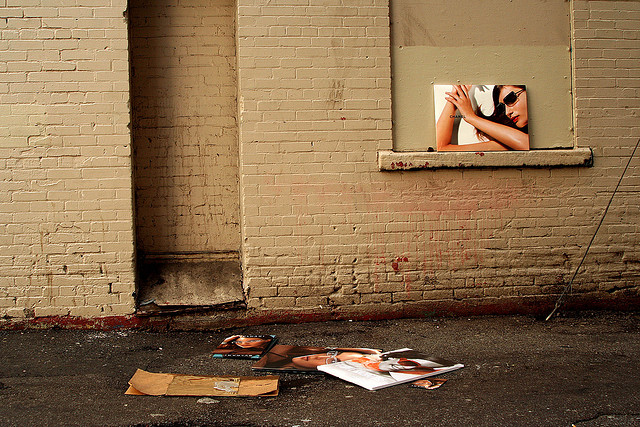 In 2004 Chanel paid $33 million for the production of a two minute film which became the most expensive advert ever made. In a post GFC economy that figure seems shocking, but Chanel is one of the most valuable global brands. They have the marketing budget and they’re not afraid to use it.
In 2004 Chanel paid $33 million for the production of a two minute film which became the most expensive advert ever made. In a post GFC economy that figure seems shocking, but Chanel is one of the most valuable global brands. They have the marketing budget and they’re not afraid to use it.
Dropbox was founded four years after the Chanel advert aired and has grown to a 300 million user base with a $10 billion valuation by using a clever referral and social sharing reward marketing strategy. Instead of paying to talk about their product Dropbox solved a problem and then rewarded happy users with extra storage when they referred friends.
In a world where social capital increasingly drives the results of companies who thoughtfully connect with their customers it’s time to ask ourselves some tough questions about how we go about influencing the people we serve.
Permission marketing and lower barriers to entry mean we have more opportunities than ever to reach people—but just because we can doesn’t mean we should. There’s a difference between having something to say and having either the opportunity or the budget to say it.
Our companies, non-profits and businesses are judged more and more not by what they sell, but by how and why they sell it. What we stand for is as much a differentiator as what we make. It turns out that there is more than one way to tell your story.
Image by Andrew Ferguson.
Pick One Thing
 When you think of Apple you immediately think about great design. You are reminded that Apple chooses to lead with design even in the moments between the moments that matter to you as a customer. It’s hard not to be in awe of a company that cares so much about your experience that they make the packaging feel like a gift.
When you think of Apple you immediately think about great design. You are reminded that Apple chooses to lead with design even in the moments between the moments that matter to you as a customer. It’s hard not to be in awe of a company that cares so much about your experience that they make the packaging feel like a gift.
Patagonia leads with transparency. It’s not always easy to tell your customers the truth, but once you make that decision every subsequent decision becomes easier.
Zappos chooses to lead with service. This choice underpins everything they do, from who they hire to how they treat their staff and customers.
Peter and Anca lead with love. They don’t make the most candles and they hug their customers every day.
The secret of all great companies (big and small) is that they choose. They understand how they create value and they do it on purpose, with intention.
What are you choosing to lead with?
Image by Amanda Tipton.
Who Is Your Customer?
filed in Marketing, Storytelling, Strategy
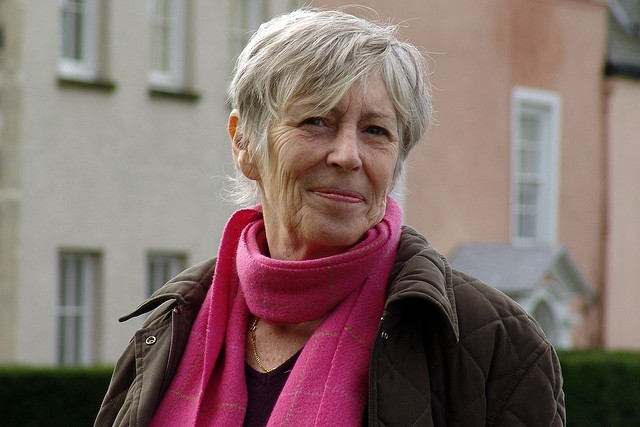 Joan works as a personal trainer at the local gym. She looks old enough to be someone’s grandma, but I don’t think she is. Unlike most women her age who live around here Joan doesn’t wear a wedding ring. She visits the same cafe for breakfast every day, but not at the same time because some days she has a client at 5.30am. On those days she goes straight to the cafe afterwards. She always eats alone, drinks a skinny latte and normally has toast. When she decides to ‘mix it up a bit’ she tells the staff she’s in the mood for a change today. She seems to struggle with her weight and wrestles with herself over whether to spread butter on her toast—some days she doesn’t.
Joan works as a personal trainer at the local gym. She looks old enough to be someone’s grandma, but I don’t think she is. Unlike most women her age who live around here Joan doesn’t wear a wedding ring. She visits the same cafe for breakfast every day, but not at the same time because some days she has a client at 5.30am. On those days she goes straight to the cafe afterwards. She always eats alone, drinks a skinny latte and normally has toast. When she decides to ‘mix it up a bit’ she tells the staff she’s in the mood for a change today. She seems to struggle with her weight and wrestles with herself over whether to spread butter on her toast—some days she doesn’t.
All of the staff at the cafe know her by name and they don’t seem to mind when she reminds them that they have forgotten to turn the music down, or the lights on. Joan doesn’t sit at the same table every day like some of the other regular customers. That tiny decision is her way of telling herself she’s not stuck in a rut. She lives close by because it’s not the kind of place people visit every day unless they have a reason to come and the cafe is not the kind of place people drive across town to experience. But then Joan is not really here for coffee and toast.
If I were the cafe owner I’d be working harder to make Joan feel like I cared that she showed up every day. I’d want to show her that she mattered.
Tell me about your customer. Not just her age, income and postcode—but tell me who she really is.
What keeps her awake at night? Where does she spend her time both online and offline? What does she care about? Tell me about her fears, hopes and dreams. What matters to her?
Tell me everything you know. Find out what you don’t.
If we don’t take the time to really see our customers and get to know their story, how can we create the things and experiences they want and need? They are giving us clues every day, we just need to open our eyes and more importantly our hearts.
Image by Charles Roffey.
How To Be Great
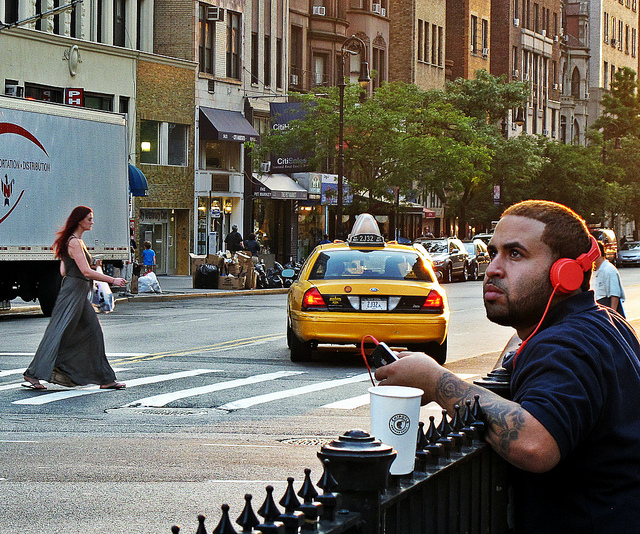 Dr Dre and Jimmy Iovine don’t make great headphones because they know the most about headphones. They make great headphones because they understand how music should sound and more importantly, they know that people want to feel, not just hear when they listen to it.
Dr Dre and Jimmy Iovine don’t make great headphones because they know the most about headphones. They make great headphones because they understand how music should sound and more importantly, they know that people want to feel, not just hear when they listen to it.
“The right song at the right time will give you a chill. Make you pull someone close. Nod your head. Sing in the mirror. Roll down the car window and crank the volume to the right.”
—Ian Rogers, CEO Beats Music
Our best ideas and innovations are not born from simply wanting to make them great.
We make them great by understanding who they are for and why they should matter.
Understanding what makes people tick and why is far more valuable than we think.
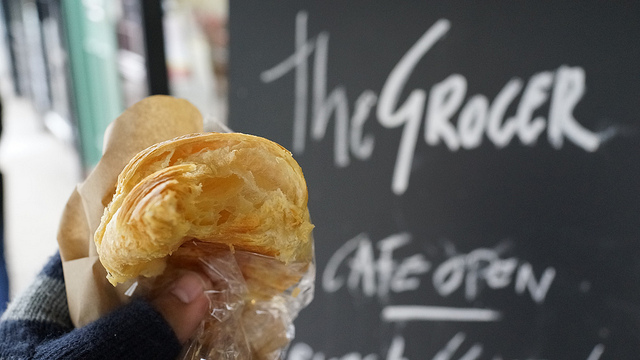 The fare on sale at the coffee window of our local cafe changes each morning.
The fare on sale at the coffee window of our local cafe changes each morning. Why do some shoppers choose to pay $3.48 for a 500g bag of Quaker oats when they can buy a kilo of supermarket own brand oats for $3.29, which works out at less than half the price?
Why do some shoppers choose to pay $3.48 for a 500g bag of Quaker oats when they can buy a kilo of supermarket own brand oats for $3.29, which works out at less than half the price? I arranged to meet one of my Twitter friends for the first time in the little bar at the front of my hotel. He is a designer from London and as luck would have it we were visiting New York at the same time, (something we discovered through our simultaneous posts of Times Square on Instagram).
I arranged to meet one of my Twitter friends for the first time in the little bar at the front of my hotel. He is a designer from London and as luck would have it we were visiting New York at the same time, (something we discovered through our simultaneous posts of Times Square on Instagram).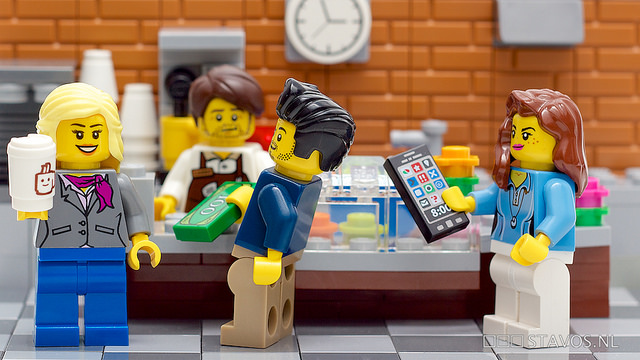 There’s a problem with how performance is measured by both ourselves and in our organisations. Typically you have a budget and targets to achieve. The purpose of the budget is to make sales go up, or waiting times go down. Our systems are designed to judge and reward us on results. If the campaign you authorised sold more t-shirts last quarter then that’s a win. But if the only way you can get sales to go up is to spend money on a campaign to make sales go up, then you’re going to have to keep spending money on campaigns to make sales go up.
There’s a problem with how performance is measured by both ourselves and in our organisations. Typically you have a budget and targets to achieve. The purpose of the budget is to make sales go up, or waiting times go down. Our systems are designed to judge and reward us on results. If the campaign you authorised sold more t-shirts last quarter then that’s a win. But if the only way you can get sales to go up is to spend money on a campaign to make sales go up, then you’re going to have to keep spending money on campaigns to make sales go up.